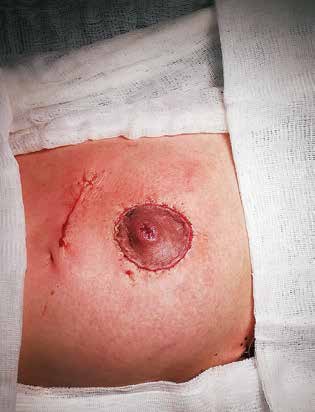Abstract
Granulomatous mastitis (GM) is a rare benign inflammatory disease of the breast, first described by Kessler and Wolloch in 1972. Clinically, it can present as unilateral, sometimes painful, increasing breast resistance, or as a hard, irregular mass. Sonography is the most useful diagnostic method for GM evaluation. The only method for definitive diagnosis is the use of biopsy. In histological findings, GM is characterized by non-caseifying granulomas, often associated with microabscess and fistula formation. There is considerable heterogeneity in treatment options; this may explain the high recurrence rate which is close to 50%. Such a high recurrence rate is alarming and proves that current treatments are suboptimal. Two treatment options are discussed worldwide: conservative strategies involving drug therapy with corticosteroids versus a surgical approach involving partial or total mastectomy. All conservative treatment options are associated with a high risk of recurrence, and most patients require surgery in the end. Thorough excision of inflammatory tissue is crucial for successful treatment while negative surgical margins are associated with a low recurrence rate. The surgical approach to GM requires sufficient radicality and presumes knowledge in the field of reconstructive breast surgery, similarly to oncosurgical breast conservation operations. However, alternatives to GM treatment with oral steroids may be acceptable for patients concerned about surgery. This article presents six case reports of patients treated at our department.

